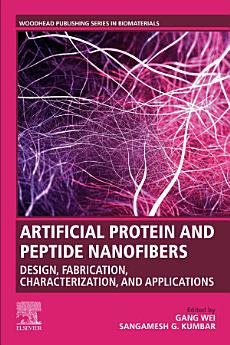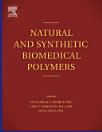Artificial Protein and Peptide Nanofibers: Design, Fabrication, Characterization, and Applications
About this ebook
About the author
Gang Wei received his Ph.D from Changchun Institute of Applied Chemistry, Chinese Academy of Sciences, China, in 2007. Following the doctoral studies, he worked as the Alexander-von-Humboldt (2007) and Carl-Zeiss (2009) Postdoctoral Fellow at the Friedrich-Schiller-University of Jena, Germany. Since 2012, he has worked as a senior researcher and group leader in Hybrid Materials Interfaces Group at the University of Bremen, Germany. Since Feb 2018, he has been appointed as a guest professor at the Ningbo Institute of Materials Technology and Engineering, Chinese Academy of Sciences. His research interests include supramolecular self-assembly, biomimetic materials, two-dimensional nanomaterials, sensors and biosensors, as well as single molecule force spectroscopy. Up to now, he has published 100+ peer-reviewed papers in the journals like Chem. Soc. Rev., Prog. Polym. Sci., ACS Nano, Adv. Funct. Mater., Nanoscale Horizons, Nanoscale, Chem. Commun., J. Mater. Chem. B, and others.
Dr. Kumbar is an Assistant Professor in the Departments of Orthopaedic Surgery, Materials Science & Engineering and Biomedical Engineering at the University of Connecticut. His research is focused on synthesis and characterization of novel biomaterials for tissue engineering and drug delivery applications. These polymeric materials namely polysaccharides, polyphosphazenes, polyanhydrides, polyesters as well as blends of two or more of the polymeric materials and composites combining the polymeric materials with ceramics in the form of 3-dimentional porous structures will serve as scaffolds for variety of tissue engineering applications. Dr. Kumbar is an active member of Society for Biomaterials (SFB), Controlled Release Society (CRS), Materials Research Society (MRS) and Orthopaedic Research Society (ORS). Dr. Kumbar is serving as a reviewer for more than 25 journals in the field of biomaterials, drug delivery and tissue engineering. He has recently edited a book “Natural and Synthetic Biomedical Polymers Elsevier Science & Technology, 2014- ISBN: 978-0-12-396983-5. He is also on the Editorial Board of more than 7 journals in the area of his expertise including Journal of Biomedical Materials Research-Part B, Journal of Applied Polymer Science, and Journal of Biomedical Nanotechnology.




